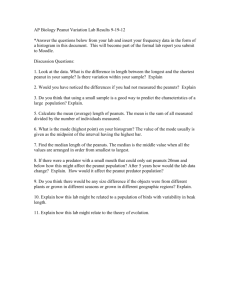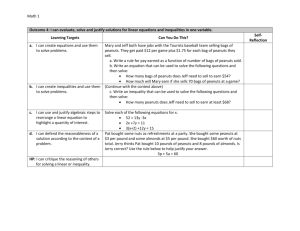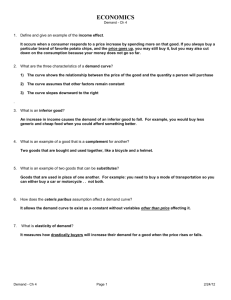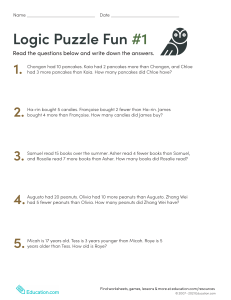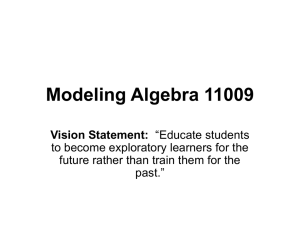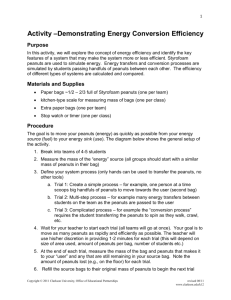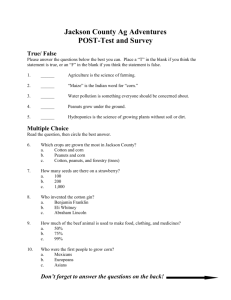Geography
advertisement
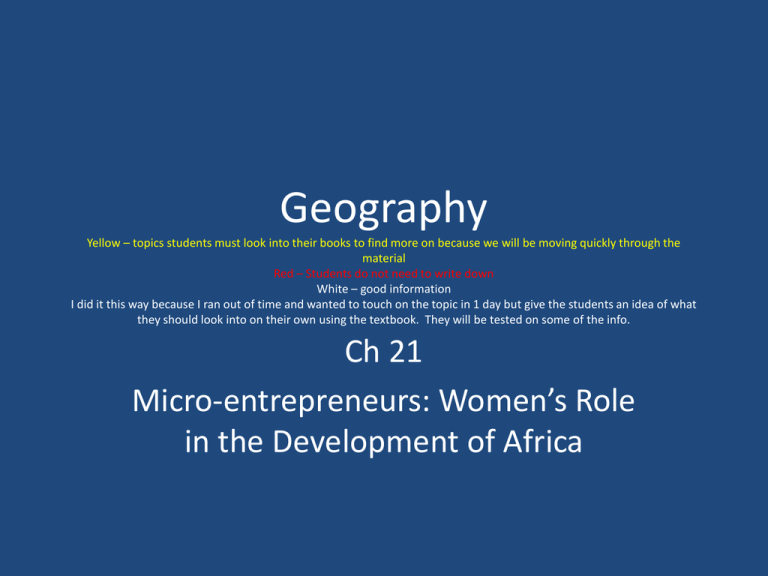
Geography Yellow – topics students must look into their books to find more on because we will be moving quickly through the material Red – Students do not need to write down White – good information I did it this way because I ran out of time and wanted to touch on the topic in 1 day but give the students an idea of what they should look into on their own using the textbook. They will be tested on some of the info. Ch 21 Micro-entrepreneurs: Women’s Role in the Development of Africa 21.1 Introduction Micro-entrepreneurs – small business • Many women of Africa start these small businesses to help their families • Programs help with loans to get started 21.2 The Geographic Setting Most of Africa is developing – 21 of the 30 poorest countries come from Africa • Most live on less than $1.00 per day • Most live in poverty and are undernourished • Disease is a big problem – malaria • Drought • Civil War 21.2 Continued Women face added challenges – traditions of Gender Based Division of Labor • Men work for money, Women take care of the family • Poor women need to work but most are uneducated (can’t read), no jobs for them • Women can find money in the Informal Economy (exchange goods & services) EX: childcare for firewood, sell bread at a local market (no license & do not pay taxes) 21.3 Grinding Peanuts in Rural Mali Mali – is one of the poorest countries in the world with most of the people living in rural villeges Peanuts & Grains – women work hard to make meals Machines are making this easier Multifunctional Platform – can be used for many things (pg. 314 picture) Used to take 3 days to grind 100 lbs. of peanuts, machine takes less than an hour Sanankoroni Womens Association (SWA) – collected half the money and the United Nations Development Program (UNDP) gave them the other half 21.3 Continued SWA – now have people pay a fee to use the machine & the women earn money Business owners have learned new skill from this machines such as: 1. How to run the machine 2. How to maintain the machine 3. Scheduling 4. Learn how to handle money, buy fuel & pay workers 21.3 Continued Machines like these improve the quality of life – more than 300 villages have their own (HOW CAN IT IMPROVE QUALITY OF LIFE?) • Women have more time to do other things than grind peanuts all day • Improved attitude towards education has changed • Electric generators have been brought in & used to light the village 21.4 Selling in Uganda’s “Poor Man’s Market” Kalerwe Market – has bargain prices, draws people from Kampala, the capital of Uganda • These markets are common, they help provide opportunity • Informal economy, do not pay taxes Section 21.4, Continued Margaret Saajjabi – runs several microenterprises • Sold soda and soap to get her start • She owns land, rents space to tenants, owns a parking lot, started a savings club CAN HER SUCCESS HELP OTHERS? HOW? 21.5 Cooking Up Comfort Food in Botswana Kgosi lives and works in Gabarone, capital of Botswana • Missed comfort food from home, only fast food was sold in his area, traditional food for affordable prices (Why are the prices affordable) Women have opened street-side restaurants • Must buy a caravan, convert into a restaurant (usually borrow money to buy) • Need to find a place to park 21.5 Continued Creating Jobs Along with Food – as business grow the women can expand and hire people to work for them (usually family or friends) 21.6 Beginning to think Globally What are problems for women to start businesses? 1.Finding the funding (Banks do not like to loan money to the poor & women Does good come out of this? • Saving clubs • Micro-credit organizations • Employment for family



